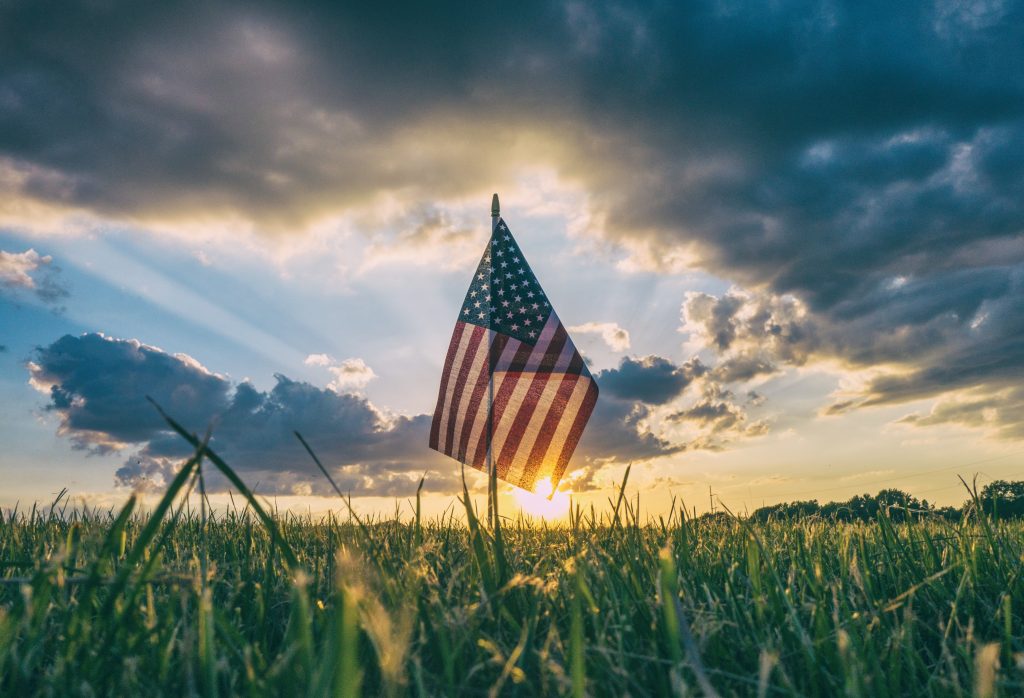We’re celebrating Memorial Day today in the United States, and if you’re like me, you recognize the importance of this holiday, but might be a little shaky on the details.
This day marks the unofficial start of summer, and it’s a day of recognizing our nation’s heroes, but as I was looking ahead to Memorial Day this year, I realized how little I knew about the day’s history and full significance. I was surprised and fascinated by all that I learned and thought it would be fun to share some of my findings with you here.

“DECORATION DAY” ORIGINS
+ The origins of Memorial Day are difficult to pinpoint, as over two dozen towns and cities claim to be the birthplace.
+ Regardless of specific locations and dates, we know that Memorial Day was initially known as Decoration Day and originated in the years following the Civil War as a day to pay tribute to fallen soldiers.
+ On May 5, 1868, General John Logan—the national commander of the Grand Army of the republic—officially proclaimed May 30, 1868, as a day “designated for the purpose of strewing with flowers, or otherwise decorating the graves of comrades who died in defense of their country during the late rebellion, and whose bodies now lie in almost every city, village and hamlet churchyard in the land.”
+ The holiday was initially known as Decoration Day, and the date of May 30th was chosen by General Logan because it wasn’t the anniversary of any particular battle.
+ On the first Decoration Day, President James Garfield made a speech at Arlington Cemetery, where 5,000 participants decorated the graves of 20,000 Union and Confederate soldiers.
+ New York was the first state to officially recognize the holiday in 1873, and it was recognized by all northern states by 1890. Southern states continued to honor their dead on separate days until after World War I.
+ In 1966, President Lyndon B. Johnson signed a proclamation declaring Waterloo, New York, as the holiday’s “official” birthplace.
MEMORIAL DAY HISTORY
+ Eventually, Decoration Day evolved into a day for commemorating American personnel who had fallen in all wars, not just the Civil War.
+ The name “Memorial Day” gradually became more common than “Decoration Day” after World War II, thought this was not declared the official name by federal law until 1967.
+ In 1968 Congress passed the Uniform Monday Holiday Act, which declared Memorial Day a federal holiday and established the date as the last Monday in May. The change went into effect in 1971, with all fifty states adopting the change within a few years.
MEMORIAL DAY TRIVIA & TRADITIONS
+ The tradition of wearing a red poppy in honor of fallen soldiers began with a World War I poem and eventually spread to France and then on to other countries.
+ In the year 2000, President Bill Clinton signed the National Moment of Remembrance Act which asks Americans to pause for one minute at 3:00 p.m. local time on Memorial Day to remember those who have died in military service to the United States.
+ Doylestown, Pennsylvania, holds the oldest Memorial Day parade, dating back to 1866.
+ The Lincoln Memorial was dedicated on Memorial Day 1922.
+ According to one study, 97% of employers have designated Memorial Day as a paid day off, but more than 40% of companies still require at least some employees to work the holiday.
+ Since its inception in 1911, the Indianapolis 500 has always been scheduled on Memorial Day weekend. (Last year the race was postponed to August due to the pandemic.)
+ Approximately 60% of Americans barbecue on Memorial Day weekend.
+ The American flag should be hung at half-staff from sunrise until noon on Memorial Day, then raised to the top of the staff until sunset.

Whether you are celebrating today with a barbecue, a visit to a cemetery, some time at the pool, or a lazy day at home, I hope you will join me today in taking a few moments to say a prayer of gratitude for our nation’s fallen heroes and for the freedoms we enjoy as a result of their sacrifice.
Thanks for all these interesting facts!